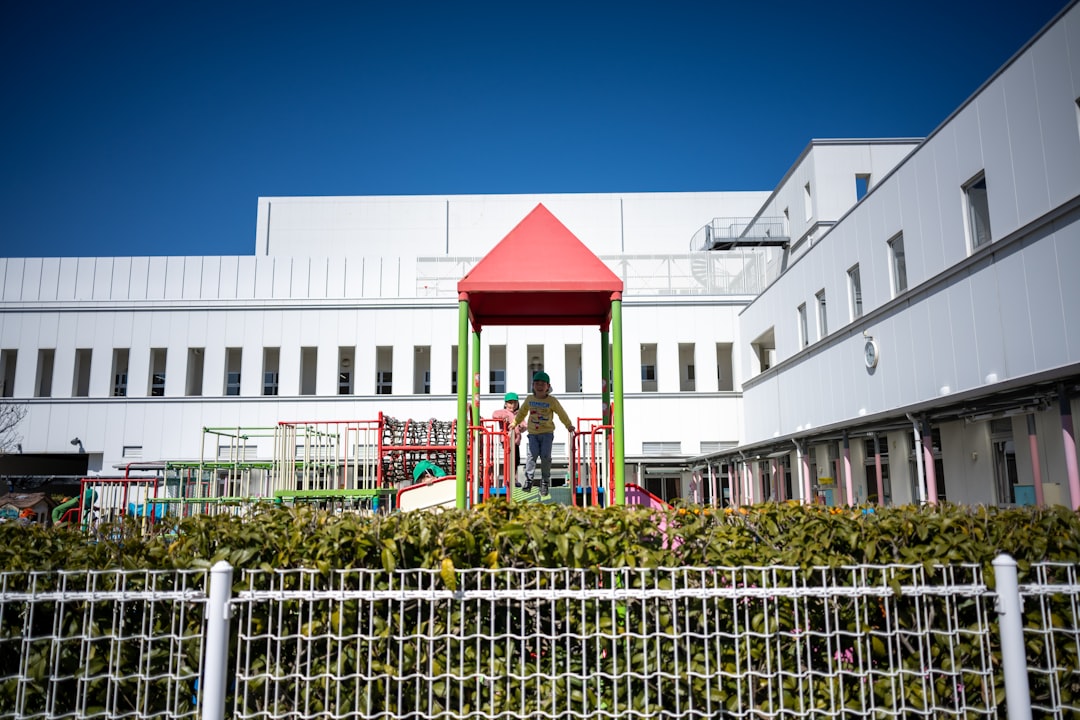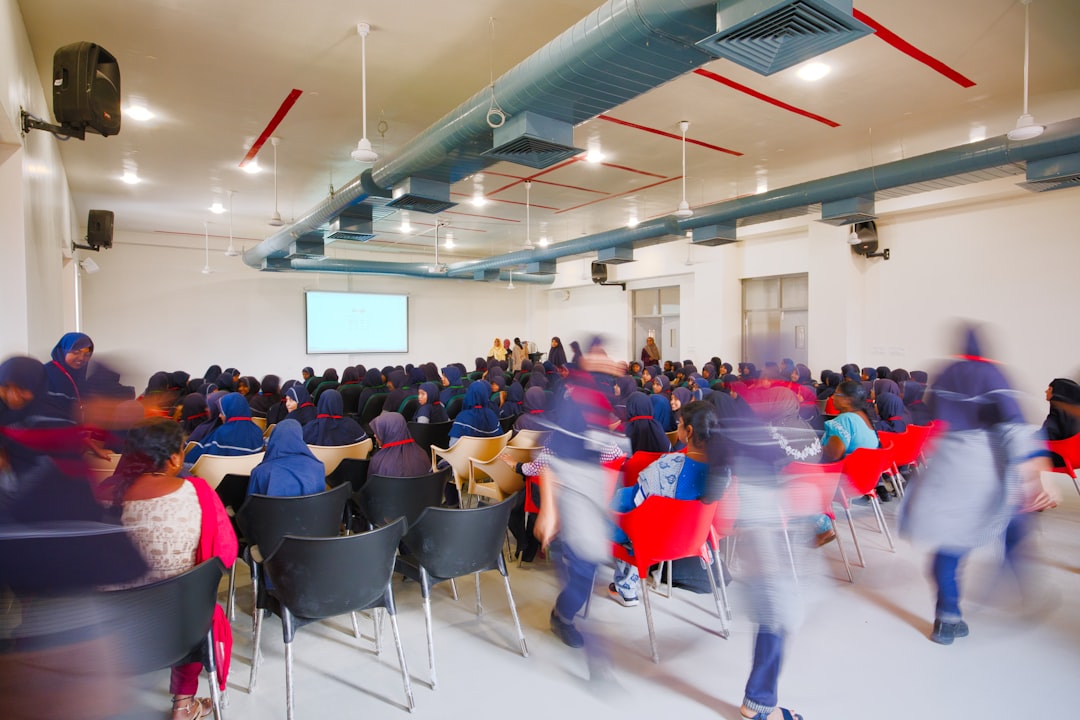

Engage prospects with a scan and streamline customer engagement with FREE QR code marketing tools by Sona – no strings attached!
Create a Free QR CodeFree consultation

No commitment

Engage prospects with a scan and streamline customer engagement with FREE QR code marketing tools by Sona – no strings attached!
Create a Free QR CodeFree consultation

No commitment
Holistic health schools are reshaping the future of wellness by integrating mind, body, and spirit into comprehensive education pathways. As demand for alternative health programs and holistic health certification increases, these schools stand at the forefront of a growing movement toward preventative and personalized care. However, alongside sector expansion come persistent challenges: many marketing and operations teams struggle to keep each student engaged, maintain consistent communication, and capture critical feedback before opportunities slip away. Many institutions are also exploring holistic health marketing to expand reach and differentiate programs.
Traditional analog feedback methods such as printed surveys and suggestion boxes often leave high-value student, alumni, and prospect voices unheard. Missed feedback moments and slow response cycles not only impact program quality, but also risk losing promising relationships that never reach the CRM. In a competitive space, lacking insight into both known and anonymous audience segments makes it difficult to nurture leads, retain students, or spot growth trends in time.
Strategically deployed QR codes are now addressing these challenges by transforming every classroom, event, or printed material into an instant channel for valuable input. Not only do QR touchpoints streamline feedback loops, but they also enrich CRM and marketing data, providing actionable intelligence when and where it matters most. This guide explores how holistic health schools can use QR codes to efficiently gather feedback, improve program offerings, and enhance the student journey, unlocking opportunities before they are lost or go to competitors.

QR codes bridge the gap between offline learning environments and digital data collection, enabling holistic health schools to capture meaningful insights quickly. Many institutions find that waiting until the end of a term, when students have moved on, means critical feedback is missed or arrives too late to act upon. Instead, QR-enabled surveys can capture sentiment in real time, closing the window for lost opportunities and delayed insights.
Schools that thoughtfully plan QR placements and destinations consistently report faster participation, higher completion rates, and richer qualitative input. The goal is not simply to replace paper with pixels, but to remove friction at every touchpoint, connect responses to context, and route actionable data into systems that drive timely improvements.
A holistic health school, for instance, can replace end-of-course paper surveys with QR codes on certificates and last-lecture slides. Graduates scan as they celebrate, participation rises, and program teams receive actionable insights within hours. The same program can invite alumni to share employment updates or client success stories through QR codes in newsletters, closing the loop between education and long-term outcomes.

Holistic health schools often face a disconnect between impactful offline moments, such as live classes, clinics, or in-person events, and data-driven decision making. Relying solely on email surveys and web forms results in incomplete feedback loops and overlooks the intent of those who engage anonymously or primarily in person. QR codes close this gap by making every physical touchpoint an onramp to digital engagement.
What sets QR codes apart is their simplicity and adaptability. They work without an app download, take seconds to scan, and can be updated centrally whenever priorities change. The same code on a classroom poster can point to a midterm pulse survey one week and a final evaluation the next.
Holistic health schools already use QR codes in orientation guides, clinic welcome placards, event badges, and certification packets. Creative teams also add them to practitioner directories, guest lecturer posters, and alumni magazines so that no interaction is isolated, and no voice is left unheard.
Selecting the right QR format for each scenario ensures smooth experiences and accurate data capture. The choice depends on the action you want students, alumni, or visitors to take and the context where scanning occurs.
For holistic health schools, feedback collection, quick contacts, and streamlined logistics are frequent goals. Combining multiple formats across the journey increases reach and response quality.
Dynamic QR codes are essential when content needs to change without reprinting. Program leaders can pivot survey questions by cohort, swap a time-sensitive form after a deadline, or A/B test pages to optimize response rates. Static codes are useful for evergreen destinations like the school homepage or a publicly accessible clinic information page.

Growth opportunities often hide in the liminal spaces between print and digital. When offline and online journeys remain siloed, early signals get missed, and promising prospects drift away. Thoughtful QR touchpoints transform static print channels into measurable, responsive growth levers.
Focus on moments where attention is high and intent is strong, then make the action immediate. The aim is to invite dialogue, capture context, and connect signals to systems that help you follow up at the right time with the right message.
Across these placements, schools can detect patterns such as which campuses or modalities generate the highest interest, which courses produce consistent praise or confusion, and which alumni stories inspire the next cohort. These insights fuel continual program refinement and smarter resource allocation.

When feedback channels are limited to infrequent emails or outdated comment boxes, insights skew toward the loudest voices. QR codes diversify who contributes and when they contribute, creating a more representative and actionable dataset.
By pairing each use case with a clear outcome, you can assess performance and refine campaigns with confidence. Consider starting with three to five core use cases, then expanding once the operational rhythm is established.
As you prove value with these use cases, add specialized flows such as clinic intake satisfaction, career services feedback, or donor stewardship surveys for scholarship programs. Each incremental QR touchpoint compounds your understanding of the student and alumni journey.
A major challenge for holistic health schools is building robust audience segments when much of the community engages in person. QR scans produce powerful signals that reveal interest, stage, and intent, allowing you to automate segmentation and target messaging precisely.
The key is to deploy multiple codes across the lifecycle and tag the resulting scan data consistently. When you connect scans to your CRM and advertising platforms, every physical interaction can trigger a relevant follow-up.
This closed-loop approach ensures best-fit prospects rise to the top while reducing wasted efforts on disengaged leads. It also allows student support and program directors to intervene earlier when feedback indicates confusion or unmet needs.
Holistic health schools use a mix of print, in-person events, email, and social media to reach diverse audiences. QR-enabled campaigns unify these channels, making every surface scannable and every moment measurable. The result is a connected experience that guides people from awareness to action with fewer drop-offs.
To get full value, treat QR codes as connectors, not one-off novelties. Pair each placement with a clear call to action, a concise preview of value, and an incentive when appropriate.
A centralized platform that manages codes, monitors performance, and syncs data into your CRM turns QR scans into system-wide signals. Teams can collaborate on one source of truth, refine campaigns quickly, and deliver a consistent student experience from first touch through graduation. Start creating QR codes for free.
Even simple QR deployments benefit from structured planning. A repeatable checklist keeps teams aligned, improves scan rates, and ensures every campaign contributes to measurable outcomes.
Begin with a single use case that solves a real problem, such as capturing course feedback before students disengage. Then add use cases sequentially, reusing what works and standardizing how codes are designed, tagged, and measured.
Clarify the primary goal. Do you want to accelerate post-class evaluations, increase workshop RSVPs, or collect alumni testimonials that enrich your CRM? Define a single outcome and how it will be measured, such as increasing response rates from 25 percent to 55 percent within one term.
Align the use case with business objectives like improving teaching quality, boosting enrollment yield, or strengthening alumni relations. If multiple departments benefit, name a clear owner for decisions and timing so the campaign does not stall.
Choose the format that matches your action. For most feedback flows, dynamic web link codes are best, since they allow destination updates and robust tracking. For quick staff contacts, use vCards. For on-the-go event responses, consider SMS or email pre-fills that encourage fast replies.
When in doubt, prefer dynamic codes. They support A/B tests, post-print edits, and analytics by source. Static codes are suitable for evergreen pages that rarely change, such as your public clinic information page or an application overview PDF.
Design with intent. Add your logo, brand colors, and a concise call to action such as “Scan to rate this class” or “Share your alumni story.” Ensure adequate quiet space around the code, and size it appropriately for viewing distance. As a rule of thumb, a code viewed from 6 feet should be at least 2 inches square.
Test across devices, lighting, and angles. Confirm that older phones and different camera apps can scan reliably. Validate that the landing page loads fast, is mobile friendly, and uses accessible color contrast and form fields. Watch a quick QR tutorial for additional scanning best practices.
Place codes where attention peaks. Classroom doors, final slide decks, certificate packets, admissions handouts, and event badges are proven high-impact locations. Pair each code with context, such as a quick benefit statement or QR-specific incentive.
Balance persistence with freshness. Keep core placements, such as door decals, consistent across terms, while rotating content via dynamic destinations. Introduce campaign-specific codes during intensives, retreats, or capstone presentations to capture unique signals.
Monitor scans and completions in real time. Compare performance by location, time of day, and device. Identify underperforming placements early and adjust CTA language, size, or position to improve results.
Close the loop by routing structured feedback into your CRM or analytics tools. Use insights to refine survey questions, improve program materials, target support where needed, and inform curriculum decisions. Make optimization a weekly practice during active campaigns.
A well-executed QR feedback program replaces fragile, manual workflows with a resilient, scalable, and insight-rich system. Over time, it becomes a cultural habit that keeps your institution responsive to student needs and market signals.
Collecting scans is a starting point, not a finish line. To drive program improvement, schools need to attribute scans to outcomes, interpret patterns, and act quickly. This is where consistent tagging, CRM integration, and dashboard visibility transform raw activity into better decisions.
Establish a clear metrics framework that aligns with your goals. For example, track scan-to-completion rate for course evaluations, time-to-response for alumni testimonials, or RSVP-to-attendance rate for workshops. Benchmarks help you assess progress and communicate impact across teams.
If you use a platform such as Sona QR, you can centralize code management, monitor scans by time and device, and pipe data into systems like HubSpot or Salesforce. With Sona.com, you can also connect anonymous scans to known contacts through buyer journey modeling and multi-touch attribution, helping you see how QR engagement contributes to application starts, enrollments, or donations.
Maximizing the potential of QR codes requires ongoing attention, creativity, and cross-functional alignment. The most successful programs treat QR campaigns as living systems that evolve with student needs, faculty feedback, and institutional priorities.
As you scale, standardize how you design, tag, and measure codes. Small consistency steps create better data quality and faster insights, and they shorten the time between recognizing a need and delivering a solution.
Strong integrations ensure every scan triggers follow-up actions such as thank-you messages, support tickets, or advisor outreach. This is how QR engagement moves from a one-time interaction to an ongoing relationship driver.

Holistic health schools are already turning QR codes into measurable wins across the student and alumni lifecycle. These examples illustrate how practical placements and clear CTAs deliver results.
Schools that embrace these tactics are closing persistent data gaps and transforming static interactions into long-term engagement. The common thread is clarity of purpose: each code exists to catalyze a specific action and route insight to the right team at the right time.
Even simple QR campaigns can falter when context is unclear or follow-up is delayed. Avoiding common pitfalls and adopting a few expert practices will improve scan rates, data quality, and downstream outcomes.
For holistic health schools navigating a complex and competitive landscape, QR codes have become more than digital shortcuts. They are a core mechanism for creating connected, high-impact experiences that put engagement and feedback at the center of every relationship.
By turning every touchpoint, from certifications to alumni events, into an actionable opportunity, schools capture vital insights and respond before opportunities are lost to anonymous churn or faster-moving competitors. This feedback-driven approach helps institutions consistently improve educational offerings, retain top students, and highlight authentic outcomes that attract tomorrow’s learners.
As holistic health education evolves, purpose-built QR programs ensure that real-time data is never out of reach. With a centralized platform such as Sona QR to generate and manage codes, and Sona.com to connect scans with journeys and outcomes, schools can fuel smarter decisions, deepen connections, and pursue excellence in whole-person learning.
QR codes have revolutionized holistic health schools by transforming feedback collection into a seamless, data-driven process. Whether it’s enhancing student engagement, improving curriculum effectiveness, or capturing real-time insights, QR codes replace cumbersome surveys with instant, mobile-friendly interactions that empower educators to make informed decisions quickly. Imagine knowing exactly which teaching methods resonate most with students—and being able to adjust your programs on the fly to boost learning outcomes.
With Sona QR, you can create dynamic, trackable QR codes in seconds that update instantly without the need for reprinting, ensuring your feedback campaigns stay fresh and relevant. Every scan delivers actionable data that connects student responses directly to program improvements, helping holistic health schools foster a more responsive and personalized learning environment. Start for free with Sona QR today and turn every scan into meaningful feedback that drives your school’s success.
A holistic health school integrates mind, body, and spirit into education pathways focused on preventative and personalized wellness care.
Holistic health schools emphasize comprehensive wellness by combining alternative health programs and personalized care, unlike traditional medical schools that focus mainly on conventional medicine.
Holistic health schools offer programs such as herbalism, massage therapy, integrative nutrition, energy work, and other alternative health disciplines.
The article does not specify locations but suggests that top holistic health schools use innovative feedback and marketing methods to enhance student engagement and program quality.
Graduates can pursue careers as practitioners in integrative medicine, wellness coaching, alternative therapies, and related fields that focus on whole-person health.
They use strategically deployed QR codes to gather real-time feedback through mobile-friendly surveys, enabling faster, richer insights and timely program improvements.
QR codes bridge offline and online engagement by making physical touchpoints interactive, increasing participation, enabling dynamic content updates, and providing valuable data for decision making.
Common uses include post-class feedback, alumni success story collection, workshop RSVPs, clinic intake satisfaction, career services feedback, and donor stewardship surveys.
By deploying multiple QR codes across the student lifecycle, tagging scan data consistently, and syncing with CRMs and ad platforms to automate segmentation and targeted messaging.
Issuing unique codes per campaign, adding tracking parameters, training staff to promote scanning, piloting creative placements, and ensuring timely follow-up improve QR code effectiveness.
They unify print, events, email, and social media by adding QR codes with clear calls to action, enabling measurable engagement across all channels.
Provide clear context and benefits for scanning, avoid ambiguous placements, be transparent about privacy, and regularly review analytics to optimize campaigns.
They collect actionable feedback in real time, monitor scan analytics, and route data into CRMs to make informed decisions that enhance teaching quality and student support.
Formats include dynamic web links for surveys, vCards for contact sharing, SMS or email prompts for quick responses, Wi-Fi access codes, and app download links.
Use Sona QR's trackable codes to improve customer acquisition and engagement today.
Create Your FREE Trackable QR Code in SecondsJoin results-focused teams combining Sona Platform automation with advanced Google Ads strategies to scale lead generation

Connect your existing CRM

Free Account Enrichment

No setup fees
No commitment required

Free consultation

Get a custom Google Ads roadmap for your business






Launch campaigns that generate qualified leads in 30 days or less.
